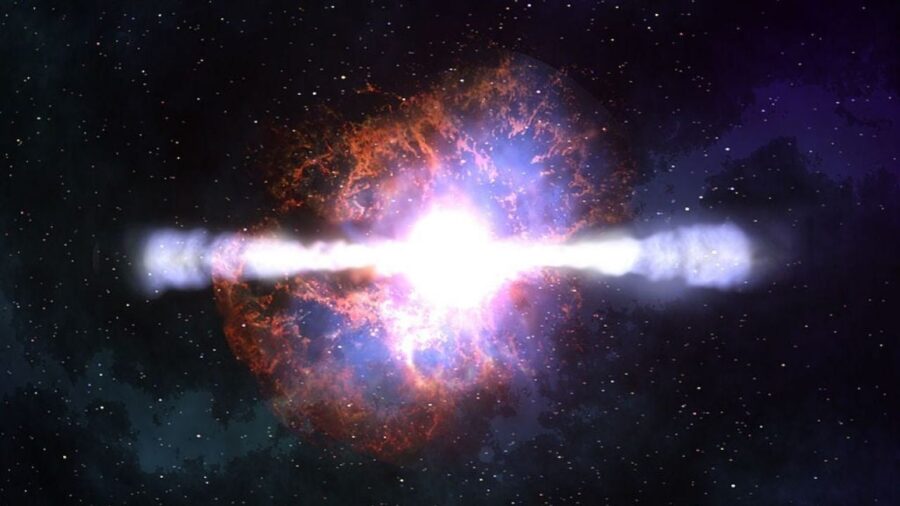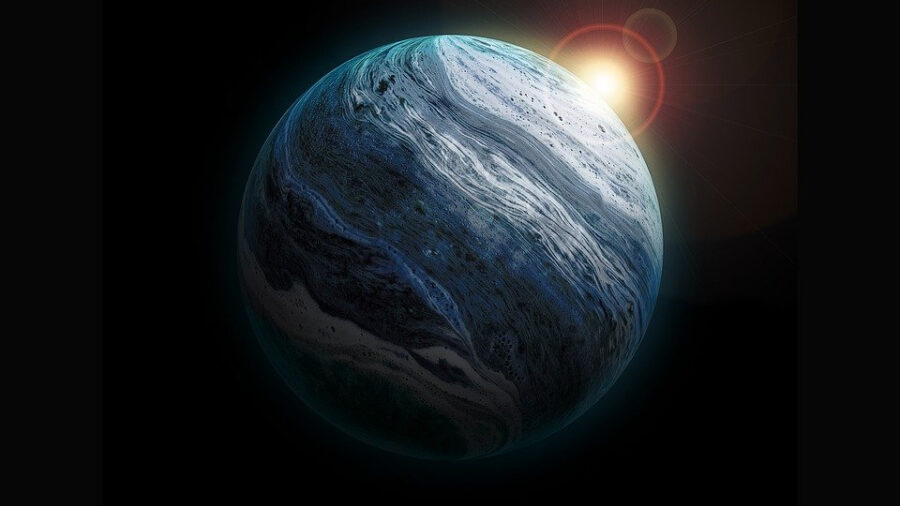Scientists Find Aftermath Of Planets Colliding In Deep Space

As reported by The Guardian, for the first time ever, scientists have been able to detect the effects of a collision between two icy, giant planets. The resulting phenomenon—a spinning object of great heat and a size possibly hundreds of times that of our own planet, is the evidence of the collision. The planetary collision was discovered as researchers were examining a far-off star similar to our own sun.
A spinning object of great heat and a size possibly hundreds of times that of our own planet is the evidence of the collision
It is thought that two giant ice planets smashed together, creating an enormous spray of debris and the spinning object seen within it. From the Netherlands’ Leiden Observatory, Matthew Kenworthy is one of the study’s co-lead authors.
He says that the collision would be “very spectacular,” producing a remnant that would become something like a star, which would be much larger than the system’s main star and, though less bright, visible throughout the system.
Kenworthy was on the hunt for the shadows of rings around planets that were passing in front of the star they orbited. The star in question, some 1,800 light-years from Earth, is ASASSN-21qj, which interested Kenworthy because it dimmed without warning or apparent cause in December of 2021.

Kenworthy made a social media post regarding the star and received a comment from an amateur astronomer, Arttu Sainio, who found that there had been an increase in infrared light from the same location 900 days prior.
Two giant ice planets smashed together, creating an enormous spray of debris and the spinning object seen within it
This information helped Kenworthy and his fellow researchers discover the afterglow of the collision of the two planets. As one of NASA’s volunteer citizen scientists, Sainiov had access to information from an infrared Space Telescope, NASA’s Neowise mission. His perspective provided Kenworthy’s team with an entirely new angle from which to examine their data.
Their new analysis concluded that the increase in infrared radiation was the result of the collision of two planets, each roughly the size of Neptune. The new object that was left behind is known as a synestia and was as hot as 700C for some three years. Eventually, it will cool down and become a new planet orbiting the main star of the system.
The team published their findings about the collision of the planets in the scientific journal Nature, wherein they related that the star began dimming some 2.5 years after the start of the afterglow because a large cloud of impact debris had crossed paths with the star.
New analysis concluded that the increase in infrared radiation was the result of the collision of two planets, each roughly the size of Neptune.
According to University of Bristol’s Simon Lock, another co-lead author of the study, this is the first time scientists have observed an event of this nature. Debris and discs have been observed in the past, but never before have researchers been able to observe “the afterglow of the planetary body that’s produced.”
There are exciting observations left for scientists to make, and they will be required in order to confirm the working hypothesis regarding what events transpired. If the collision did indeed take place, the dust cloud should continue to make its way around the star, appearing in orbit on the other side in five to 10 years.
According to Kenworthy, this will allow Earth’s largest ground-based telescopes to observe reflected light bouncing off the dust, instead of just the partial occlusion of the star.
The James Webb Space Telescope might also be brought into play to further investigate the collision of planets that appears to have taken place here, allowing the detection of infrared radiation from the dust.
It could also allow scientists to see the new planet created by the collision. Should these further details be observed, it will provide more conclusive evidence that astronomers have indeed witnessed the immediate aftermath of the collision of two planets for the first time.












